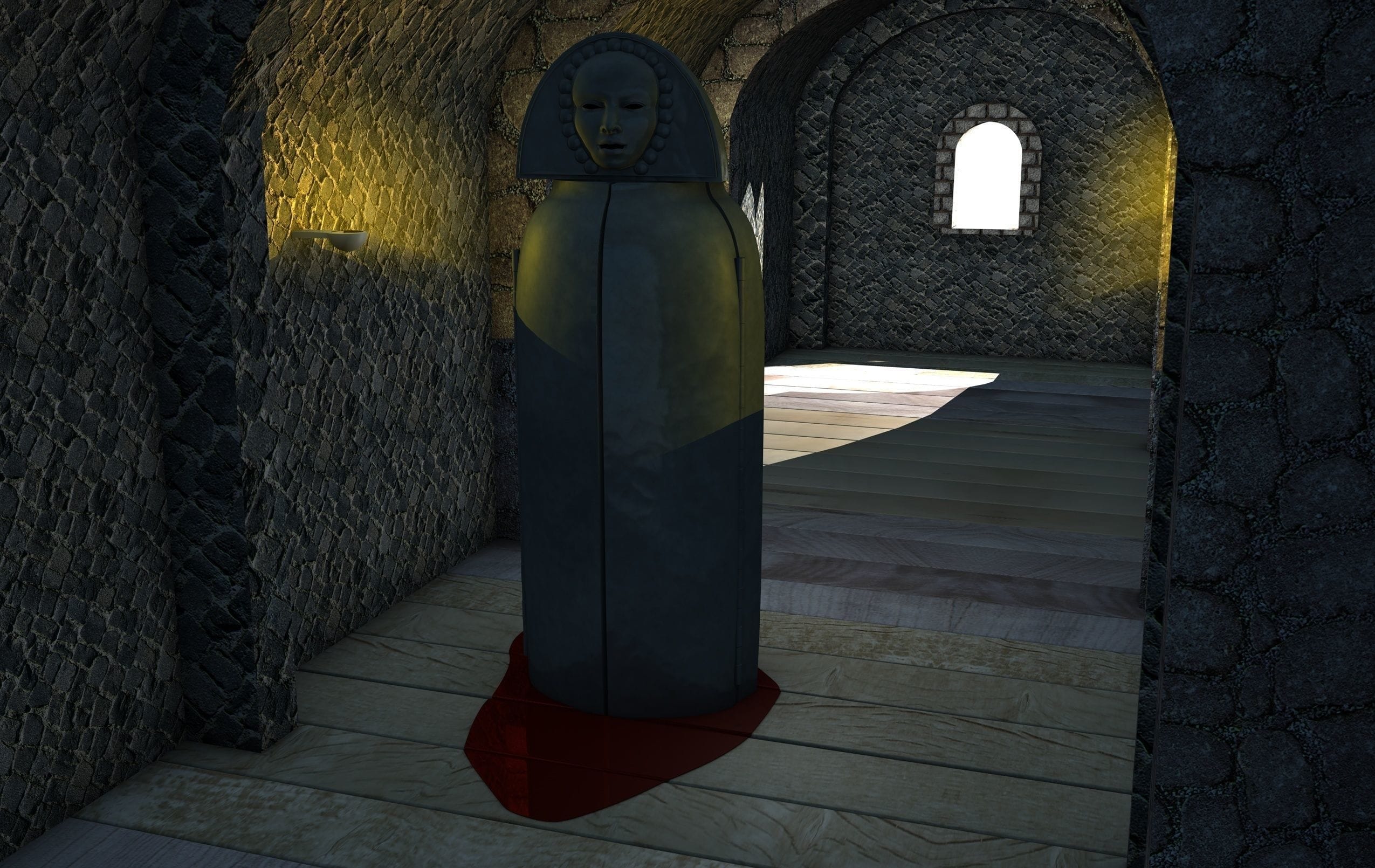Strap in for a fascinating ride as we unravel the true story of the iron maiden. This mythical torture device has left a mark on our culture, but it’s time to separate the facts from the furious tales of old. Dive in as we untangle the history and uncover the surprising truth about this infamous symbol of medieval punishment.
Unmasking the Iron Maiden: A Medieval Myth?
Ever heard of the iron maiden? You know, that terrifying metal cabinet with spikes on the inside, just waiting to skewer its victim? It’s the stuff of nightmares, often portrayed in movies and TV shows as the ultimate medieval torture device. But what if we told you it was never actually used in medieval times?
That’s right, the iron maiden, as terrifying as it sounds, is largely a product of the 19th century, not the medieval period. It’s a story that spread like wildfire, fueled by exaggerated tales and fabricated museum exhibits. One of the first mentions we see is in the writings of a German philosopher named Johann Philipp Siebenkees, known for, shall we say, embellishing his stories.
Now, this isn’t to say that the medieval period was all sunshine and roses. Torture did exist, and it was brutal. Devices like the rack and thumbscrews were designed to inflict unimaginable pain, used to force confessions, punish supposed criminals, or instill fear. However, it’s important to note that torture wasn’t as commonplace as some might believe. Its use varied greatly depending on the time, place, and people in power.
So why do we associate the iron maiden so strongly with the medieval period? Well, its image is undeniably gruesome. It plays into our darkest fears and fascinations with the cruelties humans are capable of. The iron maiden has become a cultural symbol of a dark and brutal past, even if it’s not entirely accurate.
The story of the iron maiden is a good reminder to take everything we hear, especially about the past, with a grain of salt. It teaches us to think critically about the information presented to us and to question where our information comes from. It also forces us to confront our own fascination with violence and the ethics of putting torture devices on display.
By separating the myth from reality, we gain a deeper understanding of the medieval period and a clearer picture of human behavior throughout history, both its darkness and its light.
Was the Iron Maiden a Real Torture Device?
So, we’ve all heard the stories about the iron maiden, right? This horrifying metal cabinet, studded with spikes on the inside, designed to give anyone unlucky enough to be trapped inside a truly awful time. It’s the stuff of nightmares and definitely makes for a scary story. But when it comes to separating historical fact from fiction, things get a little murky. To learn more about the tormenting tactics the iron maiden torture employed, click here.
Despite the iron maiden’s chilling reputation, actual historical evidence to support its use as a torture device during the medieval period is surprisingly absent. Think about it: if something as gruesome as the iron maiden was actually used, wouldn’t there be some record of it somewhere? We’re talking about a time when people documented pretty much everything. Yet, when we delve into medieval chronicles, legal documents, or even archaeological digs searching for physical remnants of such a device, there’s nothing. It’s like the iron maiden vanished into thin air, leaving behind only whispers and legends.
Adding to the skepticism, the complexity of the iron maiden’s supposed design raises eyebrows among historians and engineers alike. The intricate hinges, the elaborate locking mechanisms – they all scream of a level of craftsmanship that was more readily available in the 18th century, not the Middle Ages. It’s like finding a smartphone buried in a medieval village; the technology seems oddly out of place and time.
So, how did the iron maiden gain such a notorious reputation if it wasn’t a medieval torture device? Well, the story goes that it first popped up in the 18th century, thanks to a German historian named Johann Philipp Siebenkees. He wrote about the iron maiden, painting it as this terrifying tool used during the Inquisition. However, historians now believe Siebenkees’s account was more fiction than fact, lacking credible evidence and possibly fueled by the anti-Catholic sentiments of his time.
As the 19th century rolled around, the iron maiden’s legend was further cemented in the public imagination. Museums, eager to attract visitors, began displaying reconstructed “iron maidens.” These reconstructions, often based more on speculation than historical accuracy, added a tangible element to the myth. People could now see these imposing metal figures and let their imaginations run wild, solidifying the iron maiden’s place in the annals of imagined torture.
Even the legendary showman P.T. Barnum understood the public’s fascination with the macabre. He included an iron maiden in his museum, showcasing it alongside other sensationalized exhibits, further blurring the lines between fact and fiction.
The iron maiden serves as a powerful reminder that history is often as much about perception as it is about reality. Even though the iron maiden probably wasn’t a real medieval torture device, its image continues to send chills down our spines. It reminds us of the dark potential for cruelty that exists within humanity and the power of storytelling to shape our understanding of the past.
Exploring Medieval Torture: Separating Fact from Fiction
Picking the absolute most painful torture device from the medieval period is like trying to choose the worst nightmare – they were all designed to be horrific. It’s impossible to truly say which caused the most suffering, as pain is subjective and the experience would have varied from person to person.
Some experts believe the rack, a gruesome contraption that stretched its victims on a wooden frame, was a top contender for sheer agony. The slow, agonizing pulling would dislocate joints, tear muscles, and leave people begging for mercy.
Then you have the pear of anguish, a chillingly named device shaped, you guessed it, like a pear. This nasty piece of work was inserted into various bodily openings and then expanded, causing unimaginable pain and internal damage.
We can’t forget about impalement, a brutal method of execution that involved driving a stake through the body. While not strictly a torture device, the prolonged suffering it inflicted was undeniable. Victims could linger for days, dying slowly and agonizingly.
The thing is, the true horror of these devices wasn’t just the physical pain. The psychological torment, the fear, and the desperation victims endured probably amplified their suffering. Imagine the dread of knowing what was coming, the helplessness of being strapped down, and the crushing despair of realizing escape was impossible.
It’s also worth noting that historical records of torture can be unreliable. We have to consider potential biases and exaggerations in the accounts. Additionally, our understanding of pain perception and the long-term effects of these tortures is still evolving.
So, while we might never definitively crown the “winner” in this gruesome competition, one thing’s for sure: medieval torture devices were instruments of unimaginable cruelty.
Was the Iron Maiden Used for Execution?
So, we’ve been talking about medieval torture devices, and you’re probably wondering about the Iron Maiden, right? That metal coffin with spikes on the inside? It’s the stuff of nightmares! But what’s the truth behind it? Was it really used to punish people in the Middle Ages?
Well, here’s the thing: the Iron Maiden is most likely a myth. Historians generally agree that it wasn’t a real thing in medieval times. Think about it – the whole idea of a metal cabinet designed to impale a person alive sounds pretty far-fetched, even for a brutal period in history. For remarkable images of pompeii, click here.
The earliest descriptions we have of this gruesome contraption actually pop up in the 18th century, long after the medieval period. And many of those accounts seem to be based on rumors and exaggerations. There’s no solid evidence that any Iron Maidens were built or used during the Middle Ages.
What about those Iron Maidens you see in museums, you ask? Those are actually from a later time, mostly created in the 19th century. Some experts believe they were built as curiosities or even hoaxes. Imagine – someone back then deciding to make a buck by creating a scary-looking torture device.
Now, let’s be clear: just because the Iron Maiden is likely a myth doesn’t mean the Middle Ages were a walk in the park. Medieval torture was definitely real, and it was brutal. People were subjected to horrific punishments. But the methods they used were different from the Iron Maiden. Think of things like the rack, which stretched people until their joints popped, or the breaking wheel, designed to shatter bones. These were cruel and terrifying punishments, but they weren’t as elaborate or theatrical as the Iron Maiden.
So why do we believe in the Iron Maiden so much? Well, the story has a way of sticking with us. It plays into our fascination with the dark side of history. Plus, the image of the Iron Maiden is so vivid and terrifying, it’s easy to see why it’s been used in books, movies, and TV shows. The Iron Maiden has become a cultural icon, even if it’s based on a myth.
The important thing to remember is that history is complex. We need to be careful about the stories we hear and the evidence we trust. Just because something sounds good or looks scary doesn’t mean it’s true! And that’s what makes studying history so fascinating – it’s all about separating fact from fiction and understanding the real story behind the legends.
- Unveiling Bernhard Caesar Einstein’s Scientific Achievements: A Legacy in Engineering - July 15, 2025
- Uncover who is Jerry McSorley: CEO, Family Man, Business Success Story - July 15, 2025
- Discover Bernhard Caesar Einstein’s Scientific Contributions: Unveiling a Legacy Beyond Einstein - July 15, 2025
















2 thoughts on “The Iron Maiden Torture Device: Separating Medieval Fact from Fiction”
Comments are closed.